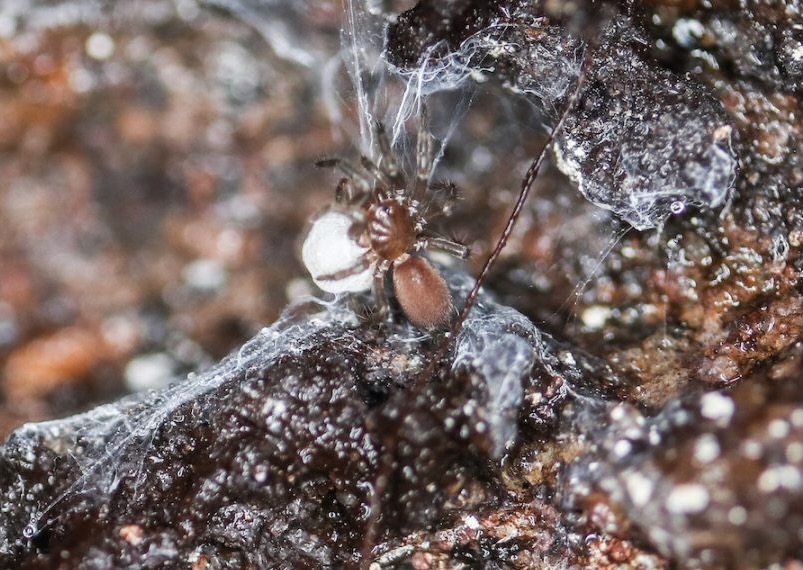
The U.S. Fish and Wildlife Service listed the world’s smallest tarantula as federally endangered in 1995. Photo by Gary Peeples/USFWS
By Matt Dhillon
Measuring .10-.15 inches – about the size of a fingernail – the spruce-fir moss spider is the world’s smallest tarantula and is considered federally endangered. The reclusive spider is hard to find, living in only six high-elevation areas of Southern Appalachia, typically above 5,300 feet. These altitudes are so ecologically distinct from the surrounding area that they are often referred to as sky islands.
The tiny tarantula lives in mats of moss on the rocky surface of the mountains. Although it constructs a tube-shaped web between the rock and moss, this is thought to be for shelter, since there are no records of prey being found in the webs. Instead, the spider is known to hunt the tiny insects, called springtails, that leap around in the vegetation.
Ballad of the Spruce-Fir Moss Spider
The spruce-fir moss spider’s plight inspired Nathaniel Marshall to compose a ballad while serving at the Southern Appalachian Highlands Conservancy.
Spruce and Fraser fir dominate the forest in which the moss spider lives. The balsam woolly adelgid, an insect that arrived in North America from Europe in the early 1900s, infests the bark of these fir trees, feeding on the sap and killing them in 3 to 5 years.
“Before the 1960s, there were dense, older stories of spruce and fir trees in these high elevations and they kept the ground moist and cool and shaded,” says Paul Super, a research coordinator in Great Smoky Mountains National Park. “That was the perfect environment for the liverwort and moss mats that these spiders live in.”
The impact of the wooly adelgid has a cascading effect on the high-altitude ecosystem.
“When the fir trees started to die off, you had a whole lot more sunshine getting to the forest floor, drying things out more, warming things up,” Super says. “Other species, like high-elevation blackberries, would come in and grow in the places the moss used to be.”
Spiders are key regulators of insect populations. If the spruce-fir moss spider population decreases, the population of mites and springtails would likely increase, according to Super.

The spruce-fir moss spider’s small habitat is displayed in this screen capture of a map by the U.S. Fish and Wildlife Service.
Related Articles
Latest News

Leave a comment
Your email address will not be published. Required fields are marked *





Leave a Comment